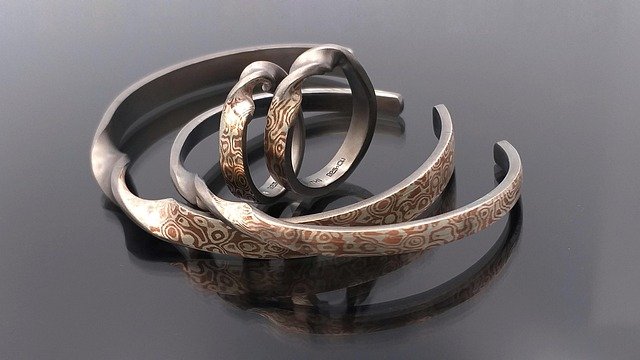Rejuvenate Your Skin with Advanced Laser Treatments
Discover how advanced laser treatments transform skin appearance without surgery. From softening fine lines and fading acne scars to treating sunspots and excess hair, modern laser therapies offer targeted, non-invasive solutions that stimulate collagen and renew texture. Learn what to expect, benefits, risks, and cost considerations for effective skin rejuvenation.

Rejuvenate Your Skin with Advanced Laser Treatments
What skin concerns can modern lasers address?
Laser therapies have become a multipurpose tool in dermatology, able to treat many common skin issues. Typical concerns managed with laser procedures include:
- Fine lines and wrinkles
- Acne and traumatic scars
- Sun damage, freckles, and age spots
- Uneven skin tone and rough texture
- Enlarged pores
- Persistent facial redness and rosacea
- Unwanted hair growth
- Tattoo removal
The exact laser system chosen—ablative, non-ablative, vascular, or pigment-targeting—depends on the condition and the patient’s skin type. A board-certified dermatologist will evaluate your needs and recommend the best device and settings.
Advantages of choosing laser therapy for skin rejuvenation
Laser treatments provide several benefits compared with traditional cosmetic procedures and topical approaches:
- Precision: Energy can be concentrated on problem areas while sparing adjacent healthy tissue.
- Shorter recovery: Many laser sessions involve minimal downtime compared with surgery.
- Non-surgical: Most treatments avoid incisions and general anesthesia.
- Tailored care: Protocols can be customized to suit different skin concerns and goals.
- Durable outcomes: Results often persist for months or years when combined with good skin care.
- Natural regeneration: Many lasers stimulate collagen synthesis and cellular renewal, improving skin quality from within.
These advantages make lasers an attractive option for people seeking effective yet less invasive rejuvenation.
Potential risks and side effects to consider
When performed by experienced clinicians, lasers are generally safe, but side effects can occur. Common and expected reactions include temporary redness, swelling, and mild tenderness similar to a sunburn. Pigmentation changes, usually transient, can appear in some patients, particularly those with darker skin tones. Rare complications include infection or scarring.
To reduce risk, disclose your medical history and medications to your provider, follow pre- and post-care instructions, and choose a qualified practitioner with experience treating your skin type.
How to prepare for a laser appointment
Preparation helps maximize effectiveness and lower complication rates. Typical pre-treatment steps include:
- Avoid sun exposure and tanning for several weeks prior
- Stop certain topical products (like retinoids or lightening agents) as directed
- Notify your provider about all medications and supplements
- Cleanse the area thoroughly and arrive without makeup or lotions
Your clinician will supply specific guidance according to the laser modality being used and your personal skin condition.
What to expect during treatment and recovery
A standard session usually follows this flow:
- Cleansing of the treatment area and, when appropriate, application of a topical anesthetic
- Protective eyewear for both patient and clinician
- Delivery of laser pulses to targeted areas, which may feel warm, prickly, or mildly uncomfortable
- Session length that varies from a few minutes to roughly an hour depending on the area and technique
After the procedure you may notice warmth and redness for a few hours to several days. Some procedures cause peeling or crusting as the skin heals. Your dermatologist will recommend aftercare, often including sun avoidance, gentle cleansers, moisturizers, and a high-SPF sunscreen. Some treatments yield visible improvement quickly; others require a series of sessions spaced over weeks for optimal results.
Common laser types, target issues, and typical costs
| Treatment Type | Target Concerns | Average Cost Range | Number of Sessions |
|---|---|---|---|
| Fractional CO2 Laser | Deep wrinkles, scars | $1,000 - $2,500 | 1-3 |
| IPL (Intense Pulsed Light) | Sun damage, pigmentation | $300 - $600 | 3-5 |
| Erbium Laser | Fine lines, skin texture | $1,500 - $2,500 | 1-2 |
| Nd:YAG Laser | Hair removal, vascular lesions | $200 - $800 | 4-6 |
| Pulsed Dye Laser | Redness, rosacea | $350 - $1,000 | 2-4 |
Prices, rates, or cost estimates mentioned in this article are based on the latest available information but may change over time. Independent research is advised before making financial decisions.
Choosing a provider and setting realistic expectations
Not all lasers are appropriate for every skin tone or condition. Seek evaluation from a credentialed dermatologist or laser specialist who can explain which technology is best for you and outline realistic timelines and anticipated improvements. Ask to see before-and-after photos of patients with similar concerns and inquire about potential alternatives or combination approaches (for example, lasers plus topical treatments or microneedling).
Final considerations
Laser skin treatments can offer meaningful improvement for a wide array of aesthetic and medical skin issues. Benefits include targeted action, stimulation of collagen, and often shorter recovery compared with surgery. However, results vary by individual and depend on the chosen laser, treatment settings, and aftercare. A careful consultation will help you weigh benefits, costs, and downtime so you can make an informed choice that aligns with your goals.
This article is for informational purposes only and should not be considered medical advice. Please consult a qualified healthcare professional for personalized guidance and treatment.






